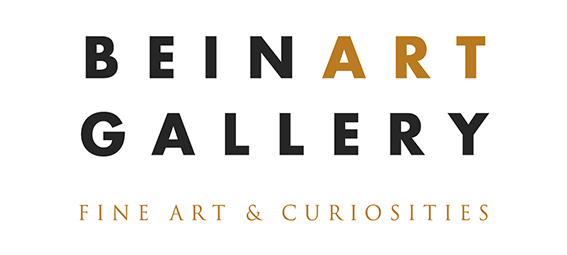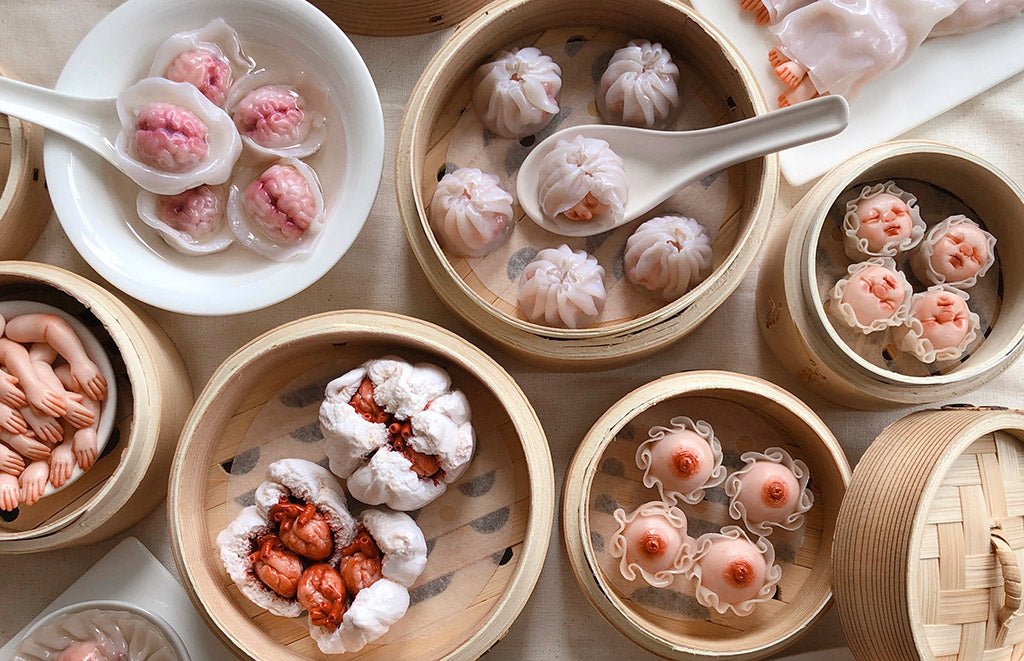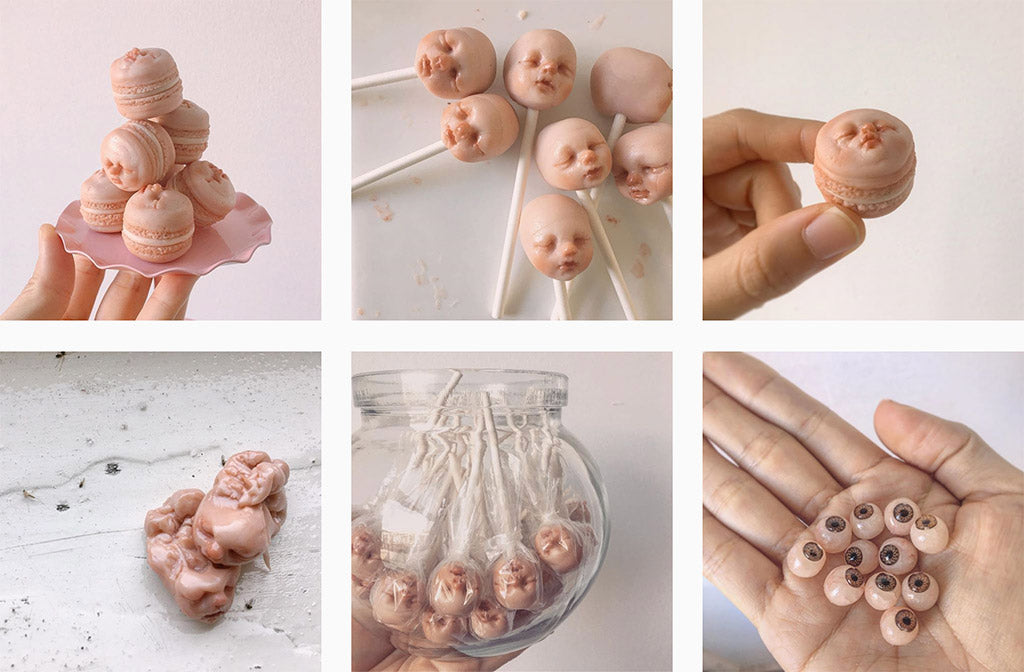The sculptures of QimmyShimmy are playful juxtapositions of the ordinary with the extraordinary: the delightful (or at least neutral) with the provocative. From a “candy” dispenser that offers babies’ heads to a rice steamer holding human hearts, her work asks us to consider what we find appealing and how divorcing parts of our body from our body as a whole can impact how we see each other as fellow human beings.
A negative response is also a valid response…. All my friends know how much I enjoy reading hate comments, especially when they offer a different, more interesting perspective. I would rather make art that people can love or hate than make something that nobody ever talks about. —QimmyShimmy
QimmyShimmy's solo show, A Little Heart, opens at Beinart Gallery on November 7th, 6-9pm and will be on view from September 8th to September 29th.
See available sculptures by QimmyShimmy.

Char Siew Bao 叉烧包 - Mixed media and polymer clay by QimmyShimmy.
Julie Antolick Winters: I have read that you are interested in “creating a balance between the beautiful and grotesque, and making something that one finds desirable yet repulsive at the same time.” What do you find valuable in eliciting this response from those who experience your art?
QimmyShimmy: Dualities are what makes life and people interesting! I have always been intrigued by taste—why do we desire certain things and shun others, and where do we draw the line between what we find beautiful and what we do not? People who look at my art often tell me, “This looks disgusting but I kind of want to eat it.” I think it is about making my viewers feel that friction and discomfort, and seeing how far and in how many ways can I push these boundaries.
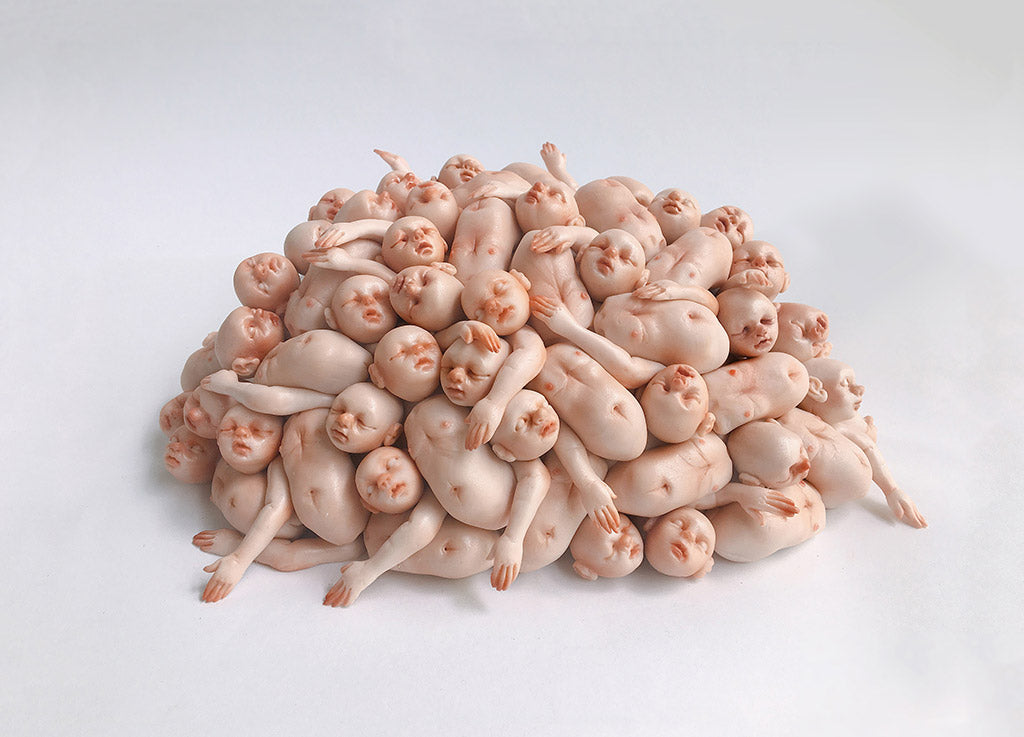
Birth/Death - Mixed media and polymer clay by QimmyShimmy. 2017
JAW: You gained a pretty large Instagram following early in your career. What do you feel draws people to your work?
Q: A wild guess is that everyone is a little strange inside, whether they choose to embrace it or not. My works infuse humour into the everyday (albeit on the darker side!), making the mundane curious and entertaining. I work mostly with familiar subjects and imagery, which make my sculptures quite relatable to most. As much as I hate to admit this, my works are quite visceral and not difficult to understand.

Hun Tun 馄饨 - Mixed media and polymer clay by QimmyShimmy.
JAW: Images of certain pieces of yours have gone viral and even been misrepresented as depicting edible items. Do you suppose that this arises from genuine misunderstanding or willful deception, and how do you combat this sort of thing?
Q: We all know that the Internet is a place with a lot of noise and very little [truth]. Many of these articles were written to be clickbait, with zero intention to value the work as a piece of art or to credit me as its creator. It gets frustrating only when people believe these articles and email me to make “bulk orders.”
I do not think I have developed any sort of defence mechanism against this just yet, but it helps that I do not take [such articles] too seriously. I just laugh it off and hope the news does not spiral out of control. It helps that news on the Internet never stays new. I usually just wait it out and in a few days, people will be talking about the next viral thing.
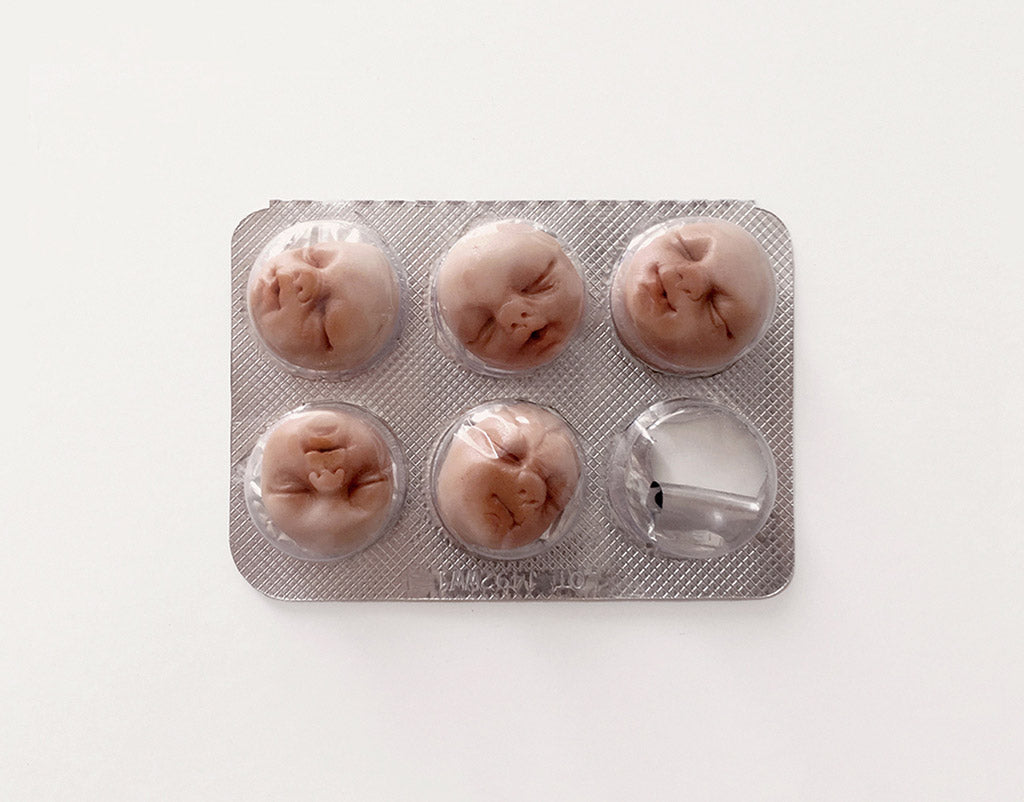
Happy Pills - Mixed media and polymer clay by QimmyShimmy. 2018.
JAW: I have learned that some people react very negatively to your art. What is it that they might be missing that you wish they would see? Or, differently put, how do you approach that kind of feedback?
Q: A negative response is also a valid response, so I think they are not missing anything at all. All my friends know how much I enjoy reading hate comments, especially when they offer a different, more interesting perspective. I would rather make art that people can love or hate than make something that nobody ever talks about. When I create my sculptures, I do not have the intention to please anyone, [much less] everyone. I attribute my “thick skin” to growing up with very critical Asian parenting, so negativity does not really affect me or my sense of self-worth (the effects of tough love, you see!).
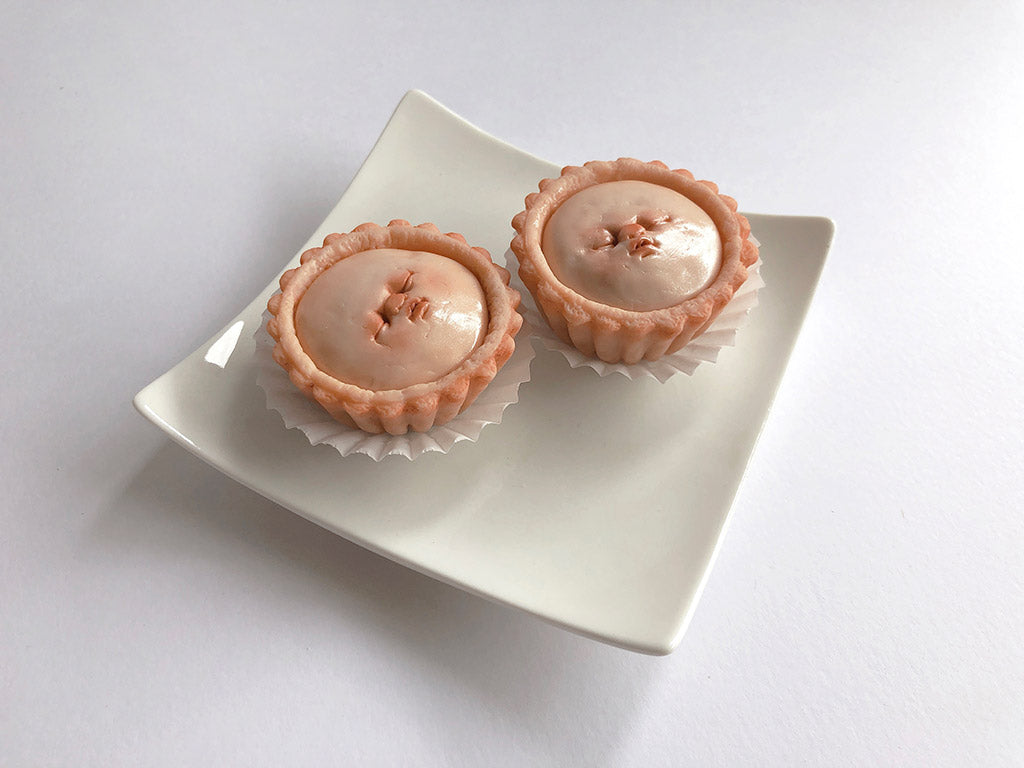
Dan Ta 蛋挞 - Mixed media and polymer clay by QimmyShimmy.
JAW: Please describe a bit the physical process of creating your sculptures.
Q: I work with familiar everyday imagery, so naturally I seek inspiration from everyday things—food, packaging, supermarkets, household appliances. The ideas for all my works come from doing something ordinary, like grocery shopping or having a meal in a local eatery. Once the idea strikes and it comes to execution, I can be quite an obsessive planner. I create my works in a series, and I want all of them to be cohesive, so there will be a period of time I put into sourcing for the right materials before I start sculpting.
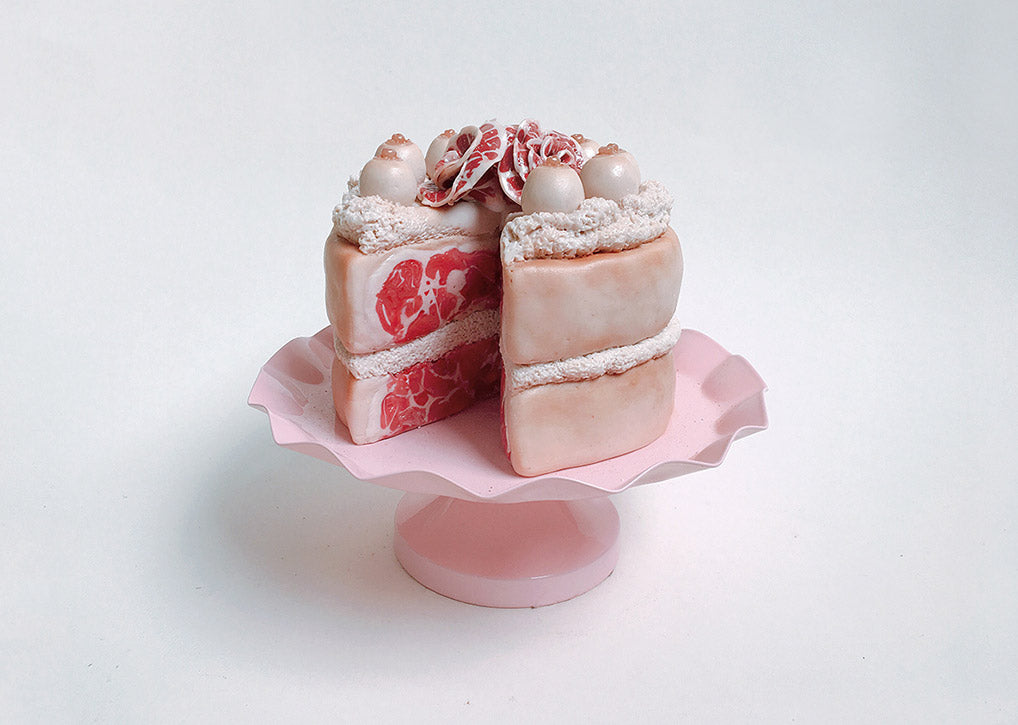
Decadence - Mixed media and polymer clay by QimmyShimmy. 2018.
JAW: For sculptures including human organs, what kinds of references, if any, do you use to ensure anatomic correctness?
Q: I do have a pretty solid collection of anatomical books, although I rely mostly on Google. The downside to printed or online references is that you only see the images in 2D, which does not really help sculpting unless you put in the effort to piece different images together.
I don’t think anatomic correctness is my eventual goal, though. I do try to get the textures and colours right, but my sculptures are often simplified, stylised versions of the real thing.
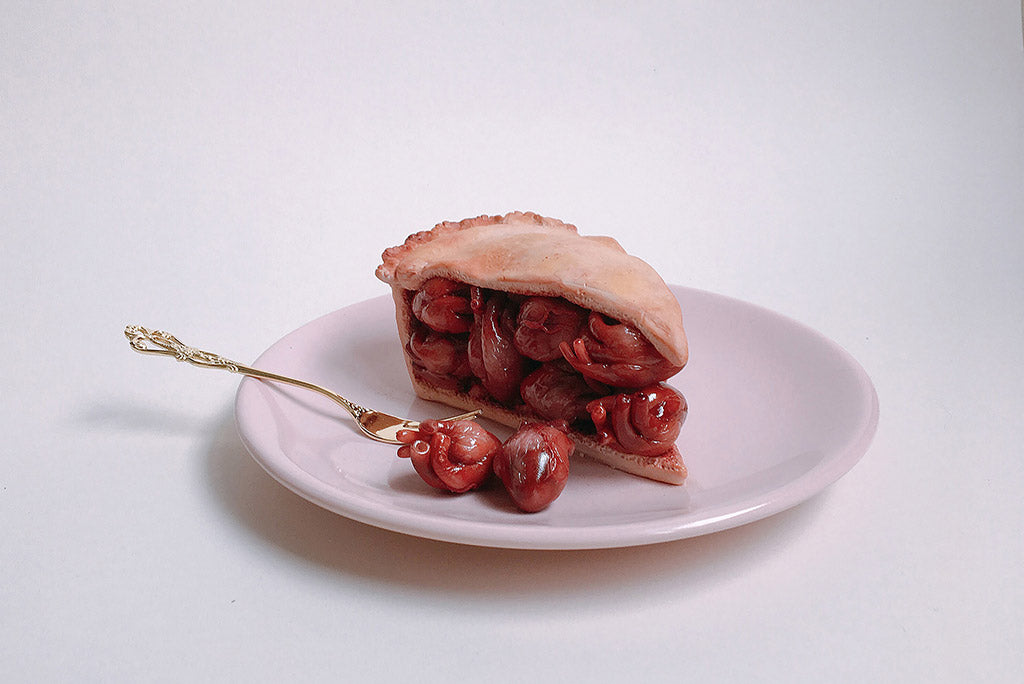
Ma Cherie - Mixed media and polymer clay by QimmyShimmy. 2018.
JAW: Who inspires you artistically, or whose work do you generally admire?
Q: Wow, this is really tough to answer! I admire so many artists, writers, storytellers and illustrators that it will be difficult to just name a few. I spent many after-school hours in graphic bookstores looking at Juxtapoz, Hi-Fructose and Beautiful Bizarre, magazines which helped me discover the genre of pop surrealism and my love for Mark Ryden, whom today I credit as one of my biggest influences and inspirations. When I was doing art history in school, the surrealism movement resonated with me most. I love the works of René Magritte and Salvador Dali. I like works that are dark, melancholic, fantastical, bizarre and a little creepy.
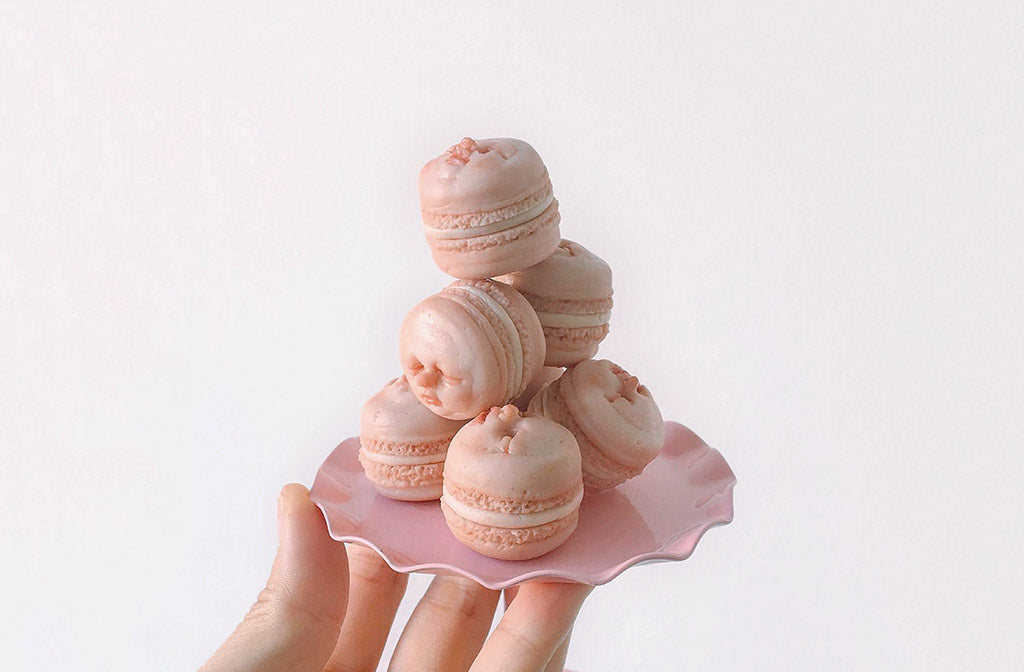
Sweet Child O’ Mine - Mixed media and polymer clay by QimmyShimmy. 2018.
JAW: When you were based in the Netherlands a few years ago, you were very selective about which pieces you sold and about not shipping your work out. Do you still maintain these practices, or have you widened your stance regarding sales?
Q: I am generally quite paranoid about shipping my works. I hate to live this artist stereotype but I really dislike administrative and logistical matters, and shipping work entails so much of that. All my works are unique, so I cannot just recreate them if they get lost of damaged in transit. Imagine having to deal with the guilt towards a hopeful collector/buyer, above already feeling heartbroken from the loss. Because I do not depend on my art to support my own living, selling is not a huge priority for me. I can be quite picky with who I sell my art to.
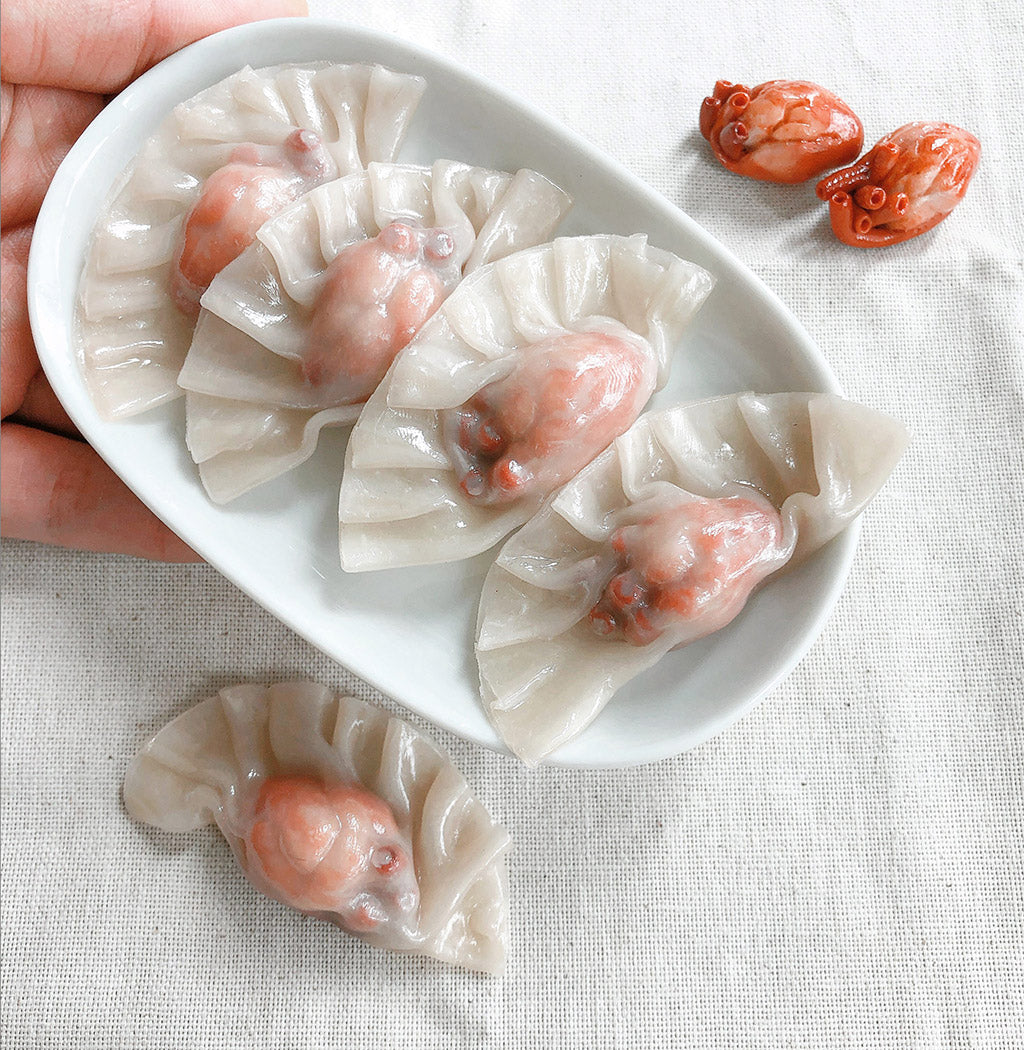
Jiao Zi 饺子 - Mixed media & polymer clay by QimmyShimmy.
JAW: In a very real sense, human body parts are commodified in your works: a cake is decorated with breasts, or a tin opens to reveal baby legs laid together like small fishes, ready for eating. I know that this reflects in part your observation that certain body parts that are typically considered attractive become unattractive when not attached to the body anymore; you have cited hair as an example of this. But in your sculptures of body parts, are there meanings you hope that viewers will dig a little deeper to grasp?
Q: People are always digging for a deeper meaning, and that is great! I have had emails and direct messages from people asking me if I am pro-choice/pro-life, [or about] my religion and political stance. Of course there are creepier and more personal questions, too.
I avoid answering questions on the deeper meanings behind my work, because I believe that there is no wrong definition until I reveal mine. It is good that my works provide enough room for multiple interpretations. I would rather my works be an open dialogue between people who look at my work and see something that I do not.
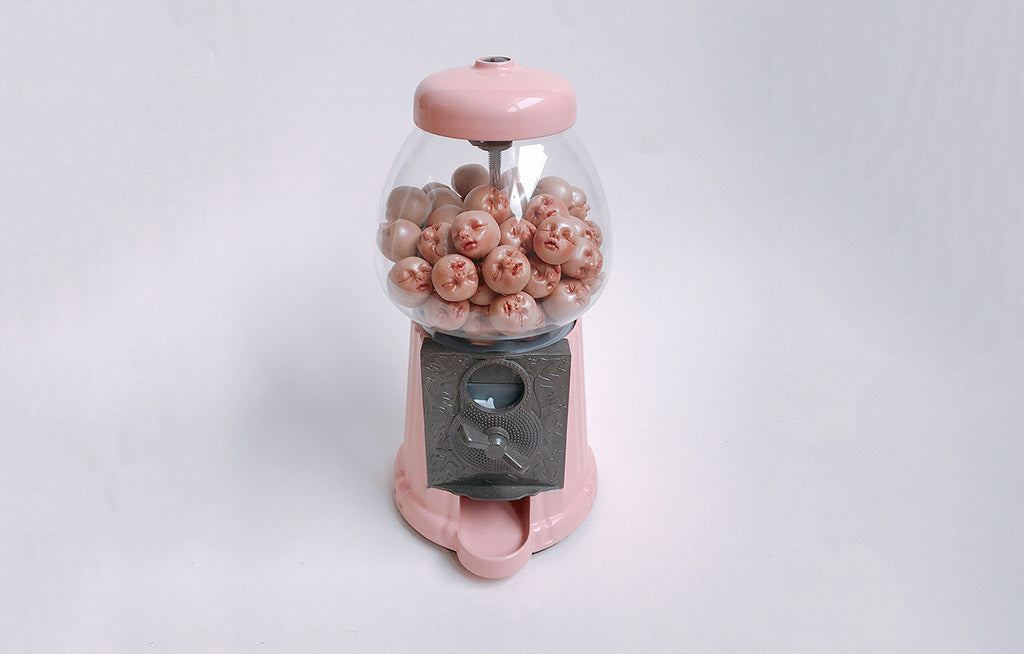
Gumball - Mixed media and polymer clay by QimmyShimmy. 2017.
JAW: In what ways would you say you have grown as an artist over the last couple of years?
Q: For the past few years I have done various stints and studies abroad which really helped expose my work to a more international audience. Despite sculpting on and off for years, I never properly discovered my style or artistic voice until I left Singapore for my studies in the Netherlands. Being abroad with fewer commitments meant I had more time to explore my art practice. But more importantly, I received a lot of support from curators who saw potential in my works and pushed me to create.
Within two years, I had two solo shows in the Netherlands and Italy, took part in a Biennale in Portugal and participated in a few group shows in the USA and Australia. Having real platforms to showcase my works made me realise that my sculptures are recognised as art, and I am not just someone “making strange things on Instagram.”
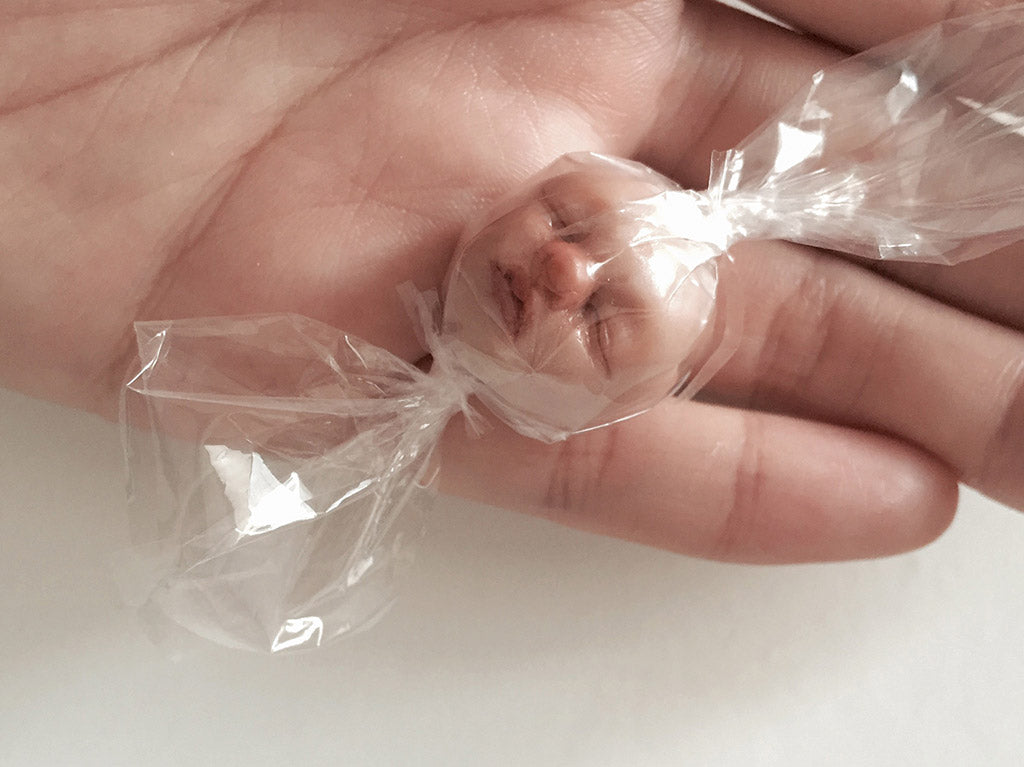
JAW: I understand that creating sculptures is something you do in addition to having a full-time job. What kinds of challenges does your job present for creating art?
Q: I work as a UX designer full-time. As much as it is creative work, it is not creative in a way an artist creates. Experience design combines user research and best practice—skills and processes that are on a whole different spectrum. The biggest challenge [is] trying to balance and commit to both practices that I care a lot about. It is not only about having enough time for both, but they require very different mind spaces to do well, and I still find it difficult to make the switch quickly. I wish I could split myself into two sometimes.
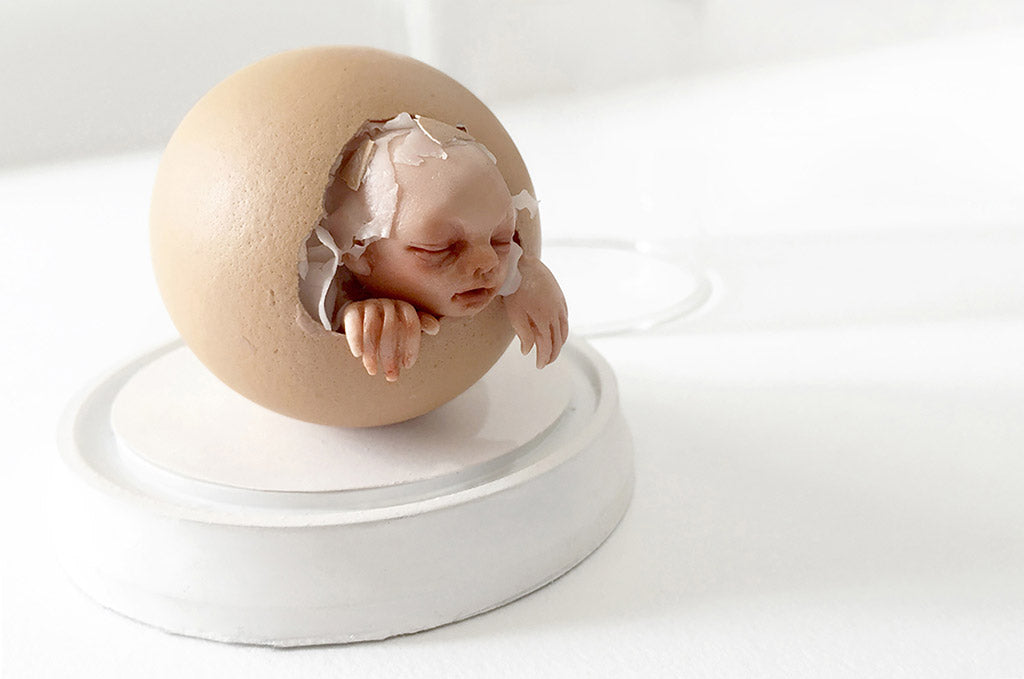
How are Babies Born? - Mixed media and polymer clay by QimmyShimmy. 2017.
JAW: Your upcoming show at Beinart Gallery is a series incorporating traditional Chinese dishes. Tell us about the genesis of this series.
Q: This series is my personal twist on Dim sum (点心), which is a style of Chinese cuisine that is quite well known around the world (even among non-Chinese communities). The series started as a reaction to the common taunt that “Chinese people eat everything” and questions why a cuisine that has millennia of history and craft is rarely associated with elegance and beauty in cultures outside its own.
Living abroad in a whole different environment really helps to define one’s roots. I have been really lucky living in the Netherlands, where people are quite open-minded and genuinely curious about cultures outside their own. I think that curiosity really pushed me to conceptualise this series, but I was not able to realise it until I came back home. It is my first show combining food, personal memory and culture.
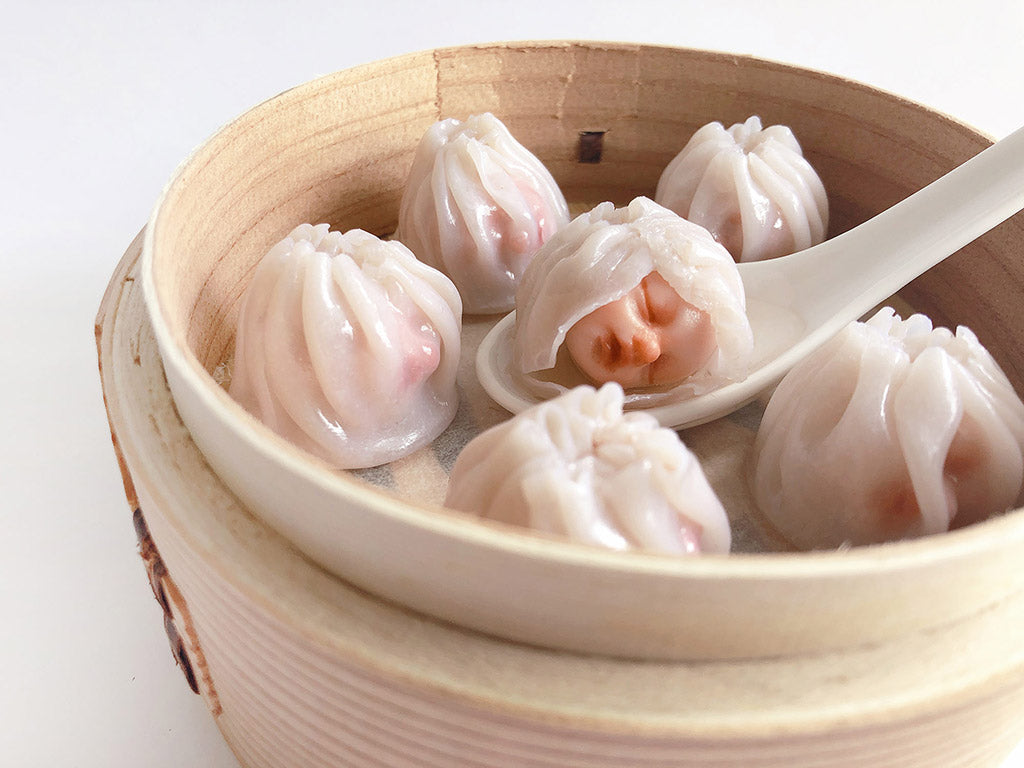
Xiao Long Bao 小笼包 - Mixed media and polymer clay by QimmyShimmy.
JAW: What else do you have coming up that you would like to make sure our readers know about?
Q: More things are definitely coming! I will be doing a couple more shows this year and the next, but of course they will be pretty spread out due to my day job commitments. A lot of people have been asking if I will sell my works through my website, but the short answer is not anytime soon. I do not have the capacity to do this for now and prefer to focus my energy on shows and building my practice. It is definitely something I will consider in the future, though! For now, support this show, love more art and have more dim sum!
This interview was written by Julie Antolick Winters for Beinart Gallery in August 2019.
Julie Antolick Winters is a writer and editor residing in the state of Maryland, USA, in a small city near Washington, D.C. Julie cowrote the introduction for Black Magick: the Art of Chet Zar and co-copyedited this book and Kris Kuksi: Divination and Delusion for Beinart Publishing. She has also been conducting artist interviews for the Beinart Collective & Gallery since 2010. In addition to her work for the Beinart Gallery, she edits science articles and books, writes poetry and practices the art of negotiation with her son.




 Cart
Cart


